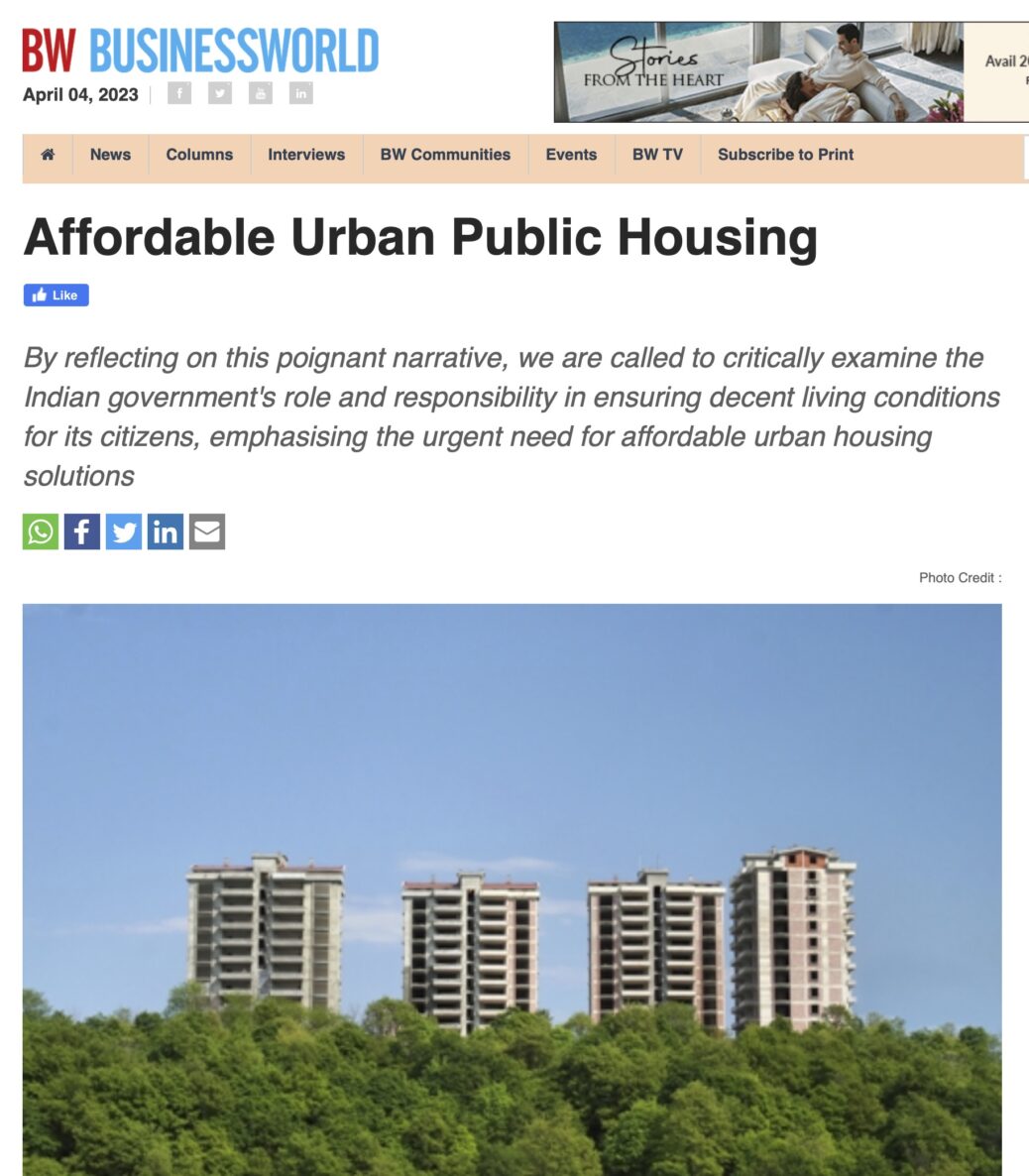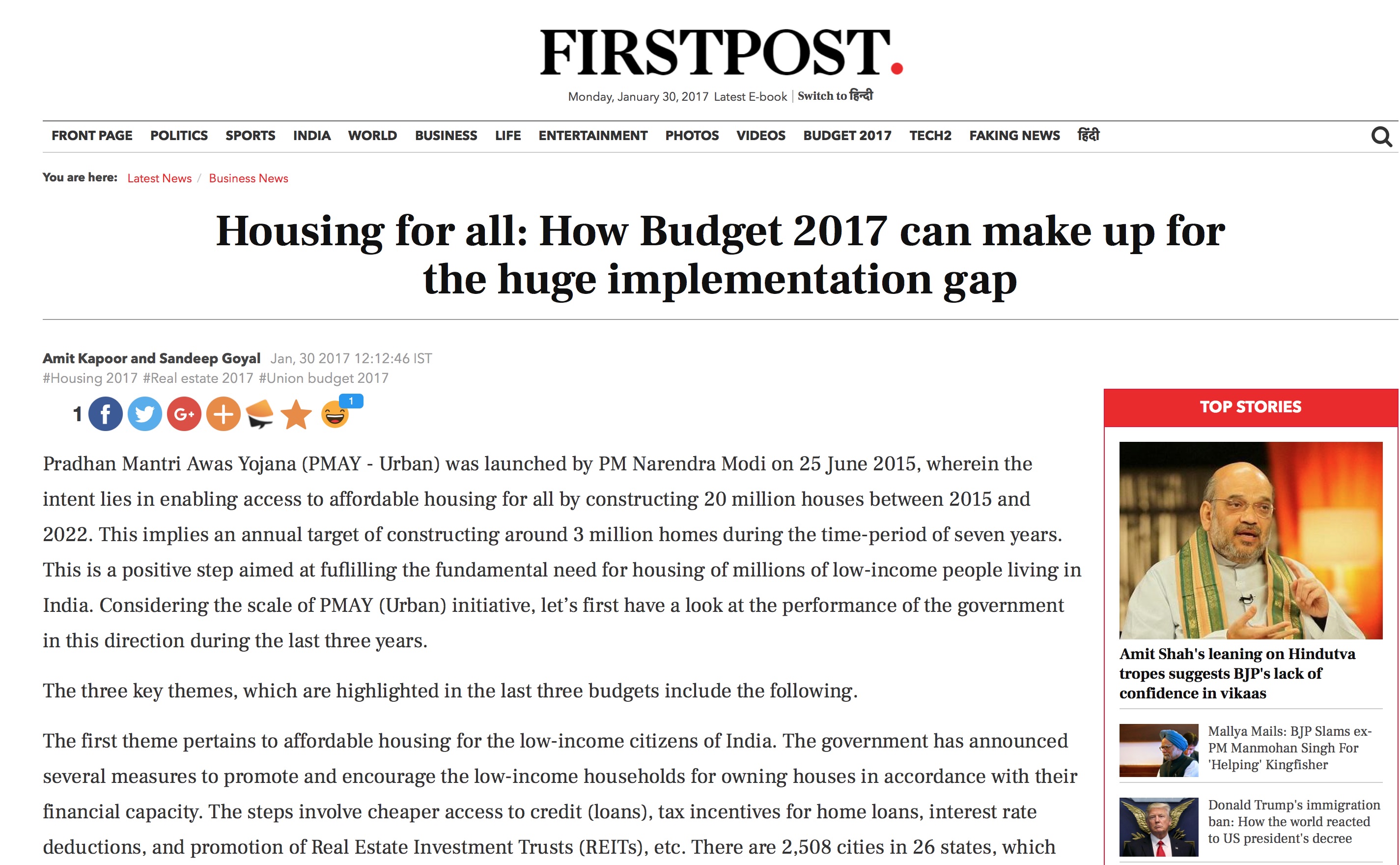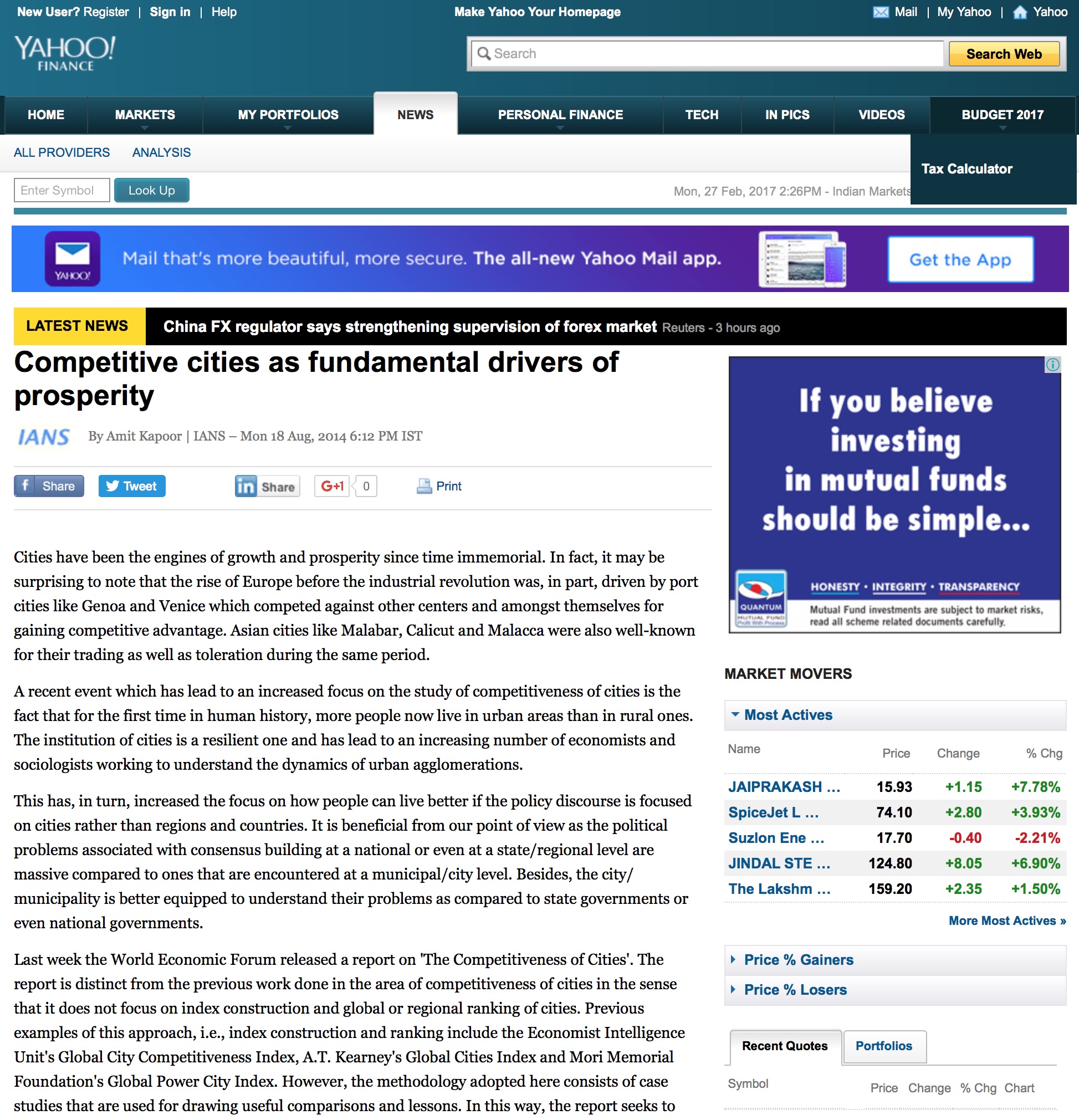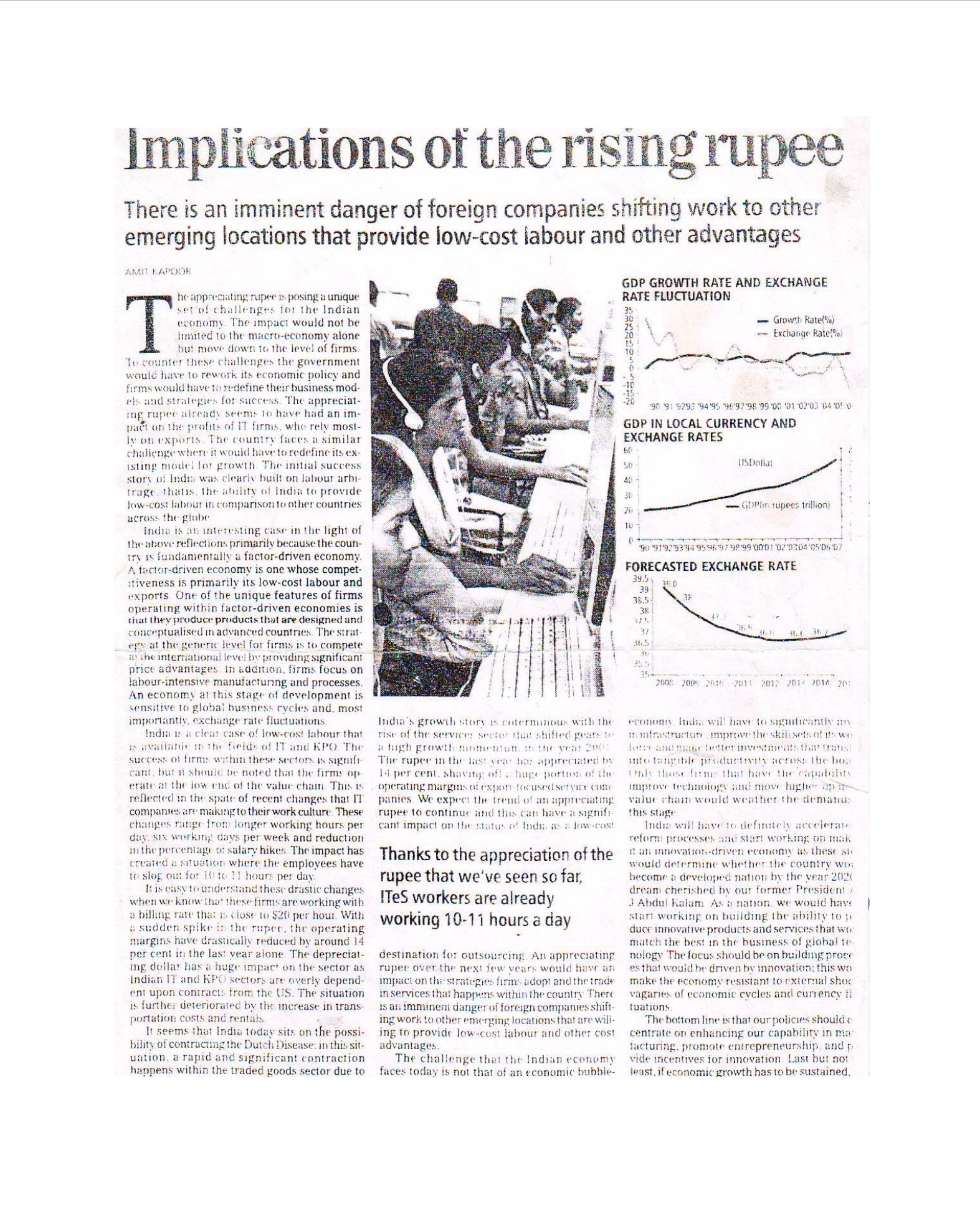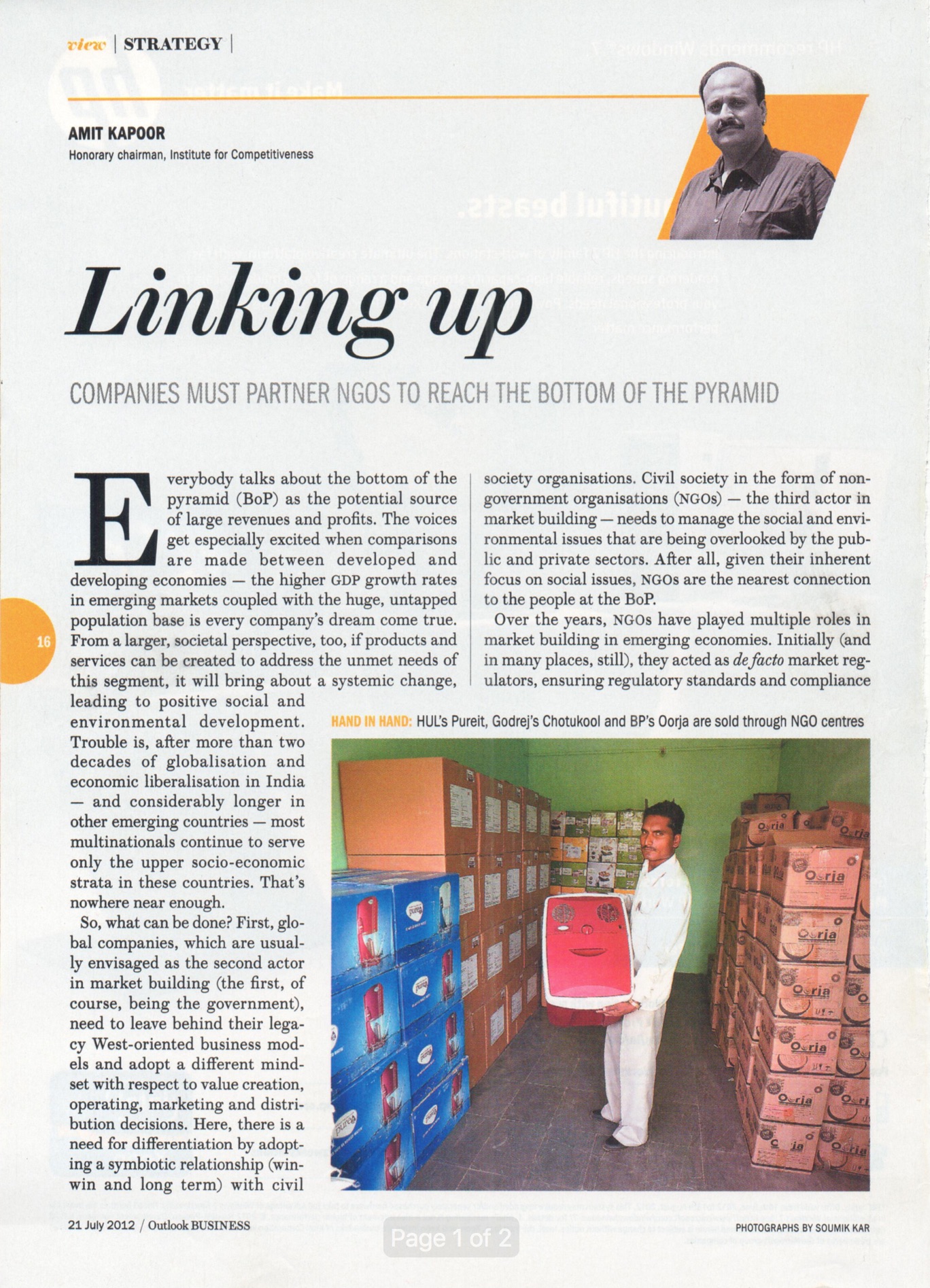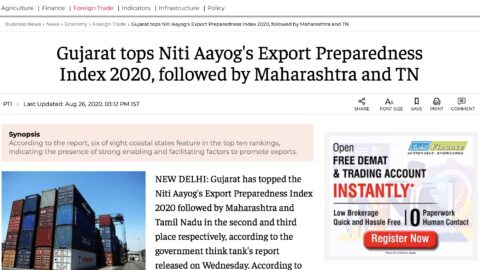Bibek Debroy, Amit Kapoor & Aditya Sinha
Drawing inspiration from Charles Dickens’ “Hard Times,” which vividly portrays the struggles faced by impoverished workers living in squalid conditions during the industrial revolution, the pressing issue of affordable urban housing in India comes to light. Much like the fictional town of Coketown, India’s rapidly urbanizing cities are home to millions of people grappling with inadequate living conditions. The story of Stephen Blackpool, a factory worker forced to reside in a cramped, unhealthy dwelling, serves as a stark reminder of the consequences resulting from the state’s failure to provide proper housing and social welfare programs in urban areas. By reflecting on this poignant narrative, we are called to critically examine the Indian government’s role and responsibility in ensuring decent living conditions for its citizens, emphasizing the urgent need for affordable urban housing solutions.
A staggering 78 million individuals reside in substandard housing conditions, underscoring the urgency of addressing this issue. The union Ministry of Housing and Urban Poverty Alleviation in India had constituted a Technical Group on Urban Housing Shortage 2012-17, tasked with assessing the extent of the housing deficit in urban India. Their findings revealed an alarming shortfall of 18.78 million units between 2007 and 2012, highlighting the pressing need for effective housing solutions in rapidly urbanizing regions.
In India, rapid urbanization has led to a significant increase in demand for affordable public housing. However, the infrastructure development for public housing has not kept pace with this rapid urbanization. This has resulted in a growing housing shortage, particularly for low-income groups, and has led to the proliferation of informal settlements. The challenge lies in addressing the housing deficit while also ensuring quality, sustainability, and accessibility for the urban poor.The absence of affordable urban housing in India has significantly contributed to the proliferation of slums in urban areas. Driven by underemployment and unemployment in rural regions, masses have migrated to cities seeking better livelihood opportunities. However, their limited skills and the lack of integration into the formal sector have led to an expanding population of urban poor. These vulnerable individuals, unable to access affordable housing, are compelled to reside in makeshift settlements with substandard living conditions and inadequate amenities. The persistent issue of slum formation underscores the urgent need for a comprehensive policy approach addressing affordable housing, skill development, and social inclusion to curb the emergence of new slum-potent neighbourhoods and promote sustainable urban development.
The union government on its part is giving a strong impetus to construction of affordable public housing. The Pradhan Mantri Awas Yojana (PMAY-U), launched in June 2015, is a flagship initiative by the Ministry of Housing and Urban Affairs (MoHUA) to provide affordable and permanent housing for the urban poor. With the mission of ‘Housing for All,’ the program has made significant strides in addressing India’s urban housing crisis.
As of February 6, 2023, the MoHUA has sanctioned the construction of 120.43 lakh houses, with ₹ 2.02 lakh crore in Central Assistance. These figures indicate that the PMAY-U has been successful in mobilizing resources and achieving widespread reach. Moreover, the fact that 1.09 crore houses have been grounded for construction and 71.57 lakh houses have been completed and delivered to beneficiaries further underscores the program’s effectiveness in addressing the housing needs of the urban poor. The PMAY-U’s provision of weather-resistant homes with basic amenities not only ensures a secure and dignified living environment but also helps in improving the overall health and well-being of the beneficiaries. Access to clean water, sanitation facilities, and electricity within these homes contributes to better hygiene, reducing the spread of diseases and improving the quality of life. Furthermore, the permanency of these homes provides a sense of stability to the urban poor, enabling them to focus on other aspects of life, such as education and employment.
The Affordable Rental Housing Complexes (ARHCs) scheme, launched by the Ministry of Housing and Urban Affairs (MoHUA) on July 31, 2020, holds immense significance in addressing the housing crisis faced by urban migrants and the poor in India. The initiative has multifarious benefits extending to the targeted beneficiaries and the broader economic landscape. (1) ARHCs alleviate the financial burden on urban migrants and the poor by providing affordable, safe, and hygienic living spaces near their workplaces. This reduces the cost of living and the time and resources spent on commuting, contributing to an improved quality of life for these vulnerable populations.
(2) The two-pronged implementation model of the scheme maximizes resource utilization by repurposing vacant government-funded houses and promoting the construction of new housing complexes on idle land. To date, Model-1 has successfully converted 5,648 vacant houses into ARHCs in five states and union territories, namely Chandigarh, Gujarat, Rajasthan, Uttarakhand, and Jammu & Kashmir. Additionally, request for proposals (RFPs) have been issued for 7,413 vacant houses across various states. Under Model-2, 73 proposals have been received from public and private entities for constructing 1,39,471 units across 18 states and union territories. Of these, 13 proposals have been approved by the Ministry for constructing 82,273 new ARHC units in seven states. This approach efficiently mobilizes existing infrastructure and fosters sustainable urban development.
(3) ARHCs contribute to a more inclusive urban fabric by integrating marginalized populations into the mainstream. By offering dignified living conditions, the scheme empowers these individuals to participate in the socio-economic life of cities, fostering social cohesion and a sense of belonging.
(4) The scheme’s emphasis on innovative construction technologies also serves as a catalyst for the adoption of environmentally sustainable practices in the housing sector. The Technology Innovation Grant (TIG) encourages the development and application of cost-effective, eco-friendly solutions that have the potential to transform the construction industry.
(5) ARHCs have a ripple effect on the broader economy. By addressing the housing needs of the urban poor and migrants, the scheme supports the labour force, driving productivity and economic growth. Additionally, the construction of ARHCs generates employment opportunities, boosting local economies and stimulating demand for goods and services.
Nonetheless, several critical challenges must be tackled to enhance the efficacy of these programs. Firstly, expediting the development of residential complexes is imperative to overcome delays in construction. Secondly, addressing the scarcity of urban land resources is crucial, as state governments struggle to allocate sufficient space for these initiatives. Lastly, the geographic distribution of numerous PMAY endeavours beyond city limits exacerbates the issue, as states are frequently unsuccessful in furnishing adequate public transportation options.
States should also address the perennial issue of land availability, which is sometimes due to the poor quality of land records. Land records encompass various information types, such as property maps and sale deeds, and are managed by different departments at district or village levels. These departments function independently, leading to inconsistent data updates across them. Consequently, land records often display discrepancies. Previous attempts to update these records through surveys have been incomplete or unsuccessful, with maps failing to accurately represent property boundaries. This misalignment between documents and on-ground property locations causes issues in future property transactions. This is acting as one of the biggest impediments in (a) slum redevelopment & (b) the construction of affordable housing. Unless the states address this, there will not be a dearth of Stephen Blackpools in India.
The article was published with Business World on March 30, 2023.

